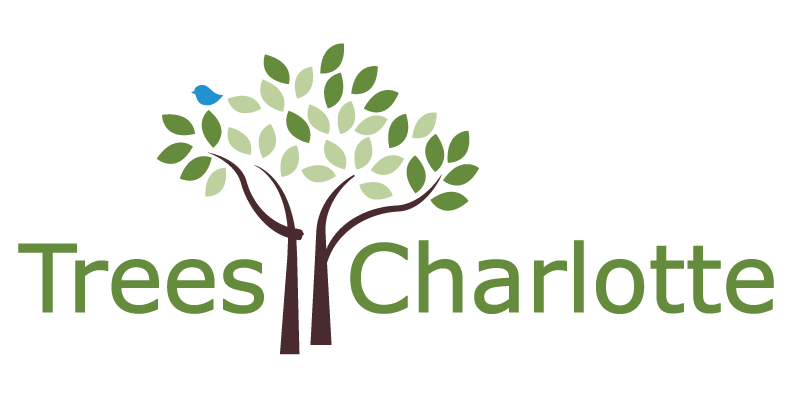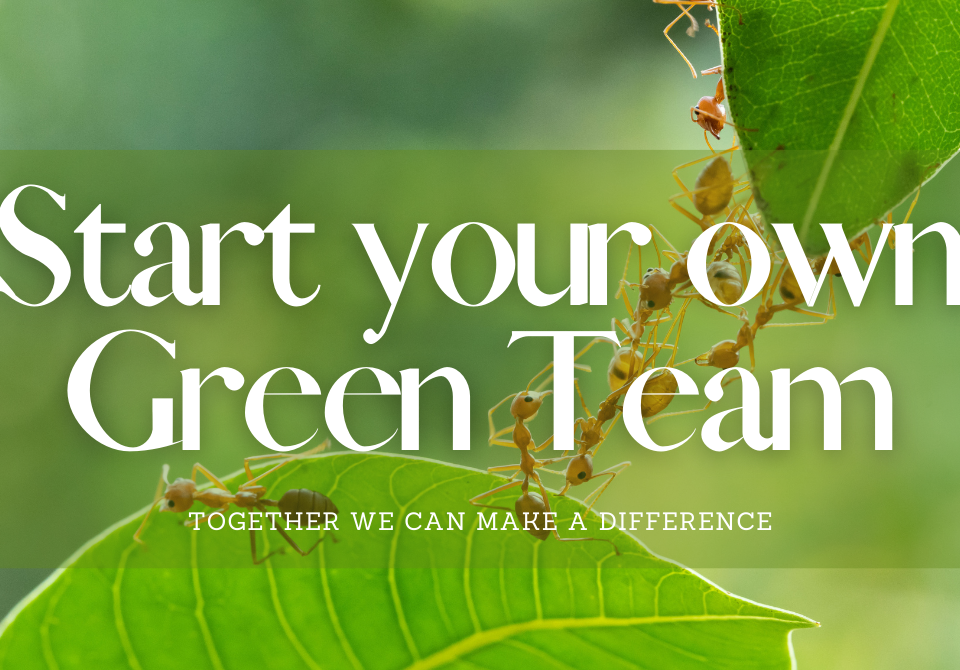The Lichen Blog
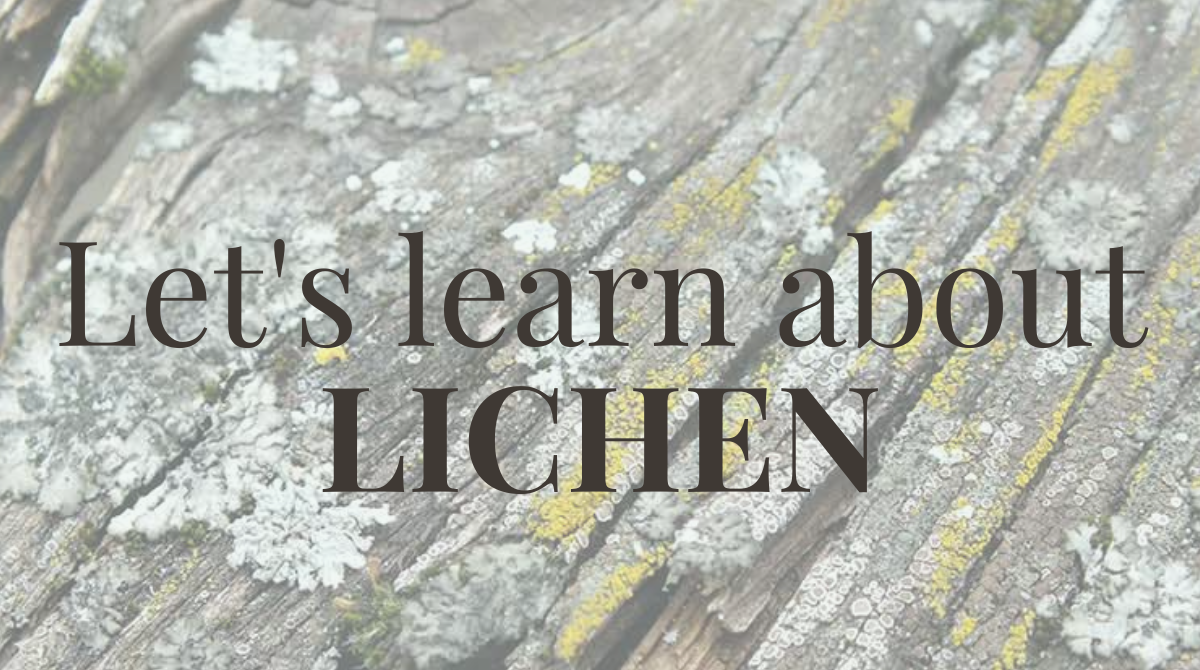
By: Kate Bolkin
I can’t even count how many times our TreesCharlotte team gets this question: “There is this greenish-bluish-greyish mossy fungus-looking substance growing on the trunk and branches of my tree. Is it harmful? Can I get rid of it?” To which we respond, “Don’t worry, that greenish-bluish-greyish mossy fungus-looking substance isn’t harmful, you don’t have to get rid of it, and it isn’t a moss at all—it’s lichen!”
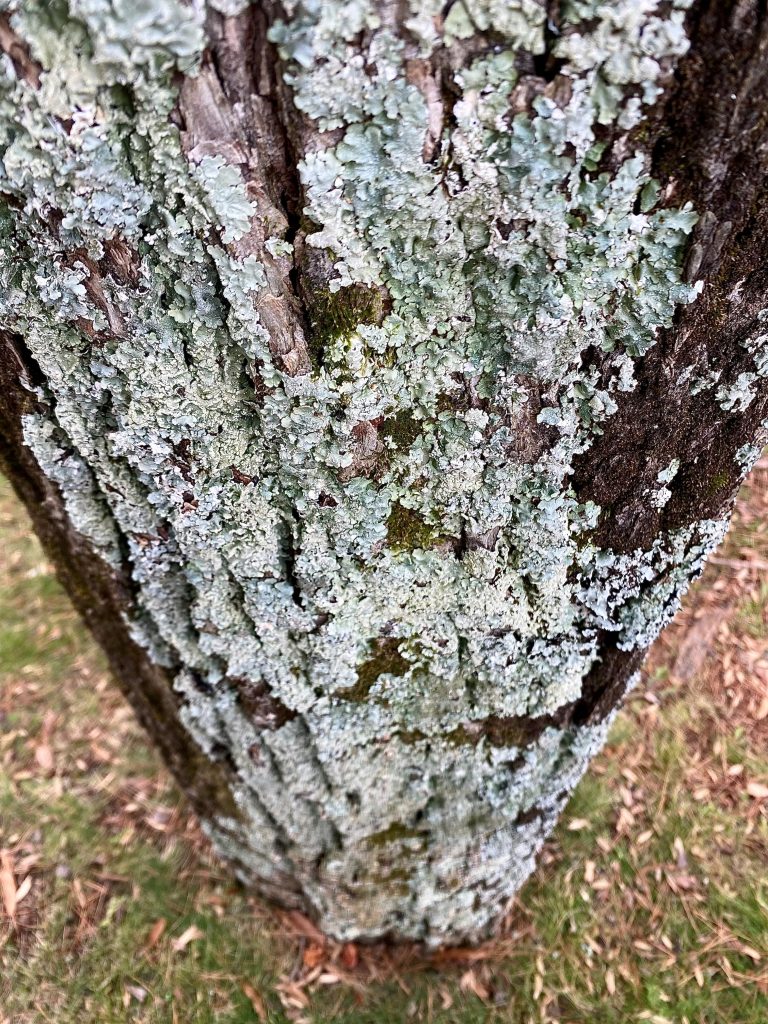
There are many different types of lichen and they appear all over the world from the arctic tundra to the tropics. Lichen (pronounced “LIKE-en”) is fascinating because it’s actually two organisms, fungi and algae, wrapped up in one. These organisms have a symbiotic relationship with one another, meaning they rely on each other to survive and thrive. The outer portion of lichen is the fungus, which provides protection, support, and atmospheric moisture for the inside of lichen, which is algae. The algae (which is typically a cyanobacteria) photosynthesizes, making food for itself and the fungus. Because lichen gets all the food and nutrients it needs internally, lichen does not require nutrients from the tree it lives on. Like barnacles on a whale or a ship, the lichen just needs somethings to stick onto, which can include anything from trees to rocks to soil to even manmade objects like fences or metal scraps.
But lichen is much more than just a harmless hitchhiker—it is an important part of our ecosystem. Lichen can break down rocks into smaller pieces, which is an essential step in soil formation. They also help with nutrient cycling in the soil, allowing plants and trees to grow. Wildlife such as deer and moose will graze on lichen during the winter when food is scarce, and birds will at times use lichen when constructing their nests.
Lichen grows on healthy and unhealthy trees alike, but tends to be more commonly found on trees that are unhealthy or dead. This does not mean that the lichen is the cause tree’s decline. In fact, it may be a blessing in disguise because it can bring attention to a tree that may not be in the best shape. Because the algae in lichen photosynthesizes to make food, lichen needs sunlight to survive and flourish. Therefore, lichen will grow more extensively on trees that have thinner canopy coverage because the trunk and branches get more sunlight. And, as we know, a tree with thin, declining canopy is typically a sign of distress. If you see a substantial amount of lichen on your tree, use that opportunity to check your tree for canopy loss that may be caused by stressors like disease, pests, drought, etc. You may find that your tree is perfectly fine, but if you do find an issue with your tree, you do not have to do anything about the lichen itself. Removing lichen will not help the issue that your tree may be facing.
At the end of the day, lichen is just another little organism (or two) that we get to share our beloved trees with.
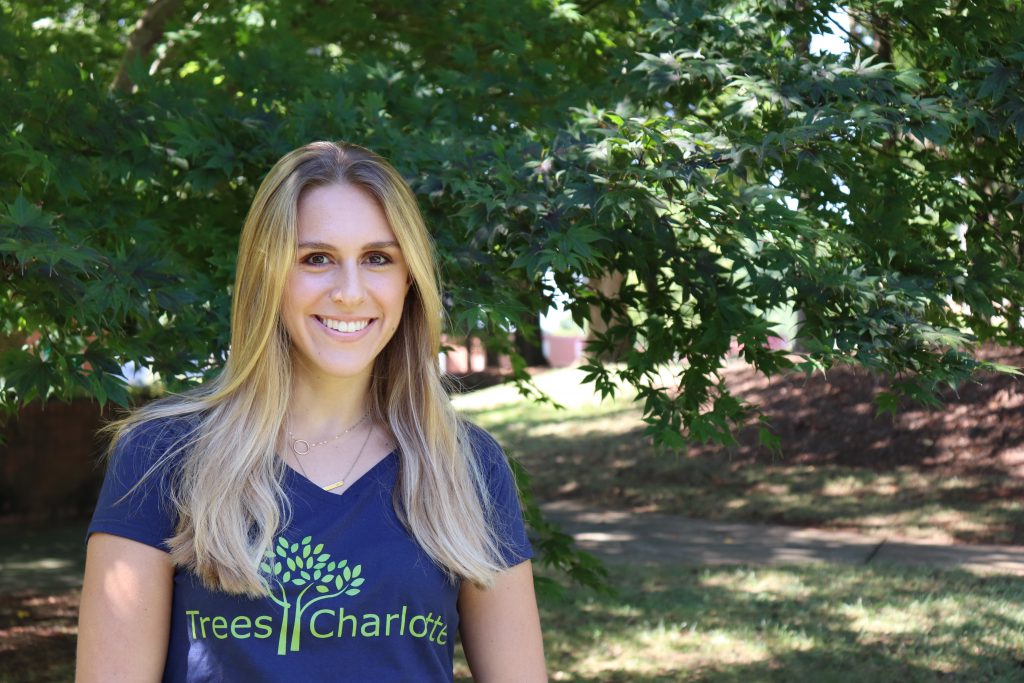
Kate Bolkin is TreesCharlotte’s Community Tree Educator. She has a background in conservation biology, environmental science, and urban forestry.
Email kate@treescharlotte.org with any tree questions or presentation inquiries!
